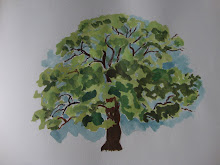This year, weather was quite a dampner to the festivities. Rain, incessant drizzle and cloudy skies coupled with exorbitant costs, must have prevented people from buying kites. I found fewer kites in the sky.
It is believed that kites were brought to India by the Chinese travelers - Fa Hien and Hiuen Tsang. Indian kites are called the fighter kites - simple paper and bamboo - with special thread called manja, that is sharp and used for fighting with other kites. We made it at home many years ago - with a mixture of plant sap, ground glass and colour - that would be applied on ordinary thread to give it that 'cutting edge'.
There is a story about kite flying in ancient India. The rulers or the nawabs of Lucknow used to fly their kites from their palace rooftops with a small purse of gold or silver attached as an incentive for the others to try cutting down the kite to retrieve the precious contents. It is also rumoured that the nawabs were not one to give away their money so easily and so they would have their own men out in the street to ensure that they got their kite back, with the purse intact.
As a youngster, it seems so cruel now, that there were times that I chased a couple of birds by taking a deep dive with my kite, swooping down on the unsuspecting creatures and frightening them out of their wits.
It could have been because of kites that were stuck in trees that we had unusual bird activity in our area. Birds that were disturbed from their usual habitat were flying around, and I got to see many of them today.
and this bluebird
And for a birds eye view of the ground below, is Nicolas Chorier, a Frenchman who specialises in "kite photography".
Chorier makes 40-sq-foot kites from siliconised nylon and carbon or fibreglass rods. The camera sits in a cradle on a line beneath the kite. The camera cradle operates by remote control . Kite and camera are flown to the required height. Chorier carries the remote control on his shoulder and the video monitor around his neck. He walks and raises and lowers the kite for shooting angles. He has taken some amazing pictures in India and brought out a book Kite's Eye View: India Between Earth and Sky.
Jama Masjid -
and the Jodhpur fort
And yes, he did lose a camera, dropping it in the Yamuna river behind the Taj Mahal. It is quite a technique to take pictures with a remote control. But, I am sure the most difficult task of the whole exercise would have been to get permission from the Indian government to take these pictures, considering the fact, that at ground level at most tourist spots, photography is either prohibited or at an additional cost.
Well, inclement weather it may have been for kite flying today, but not for the other festivites that are part of Sankranti. The rangolis were there and so were the sweets. And I hope the harvest is bountiful and the food prices come down as quickly as they shot up.











